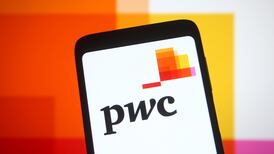Bank of Ireland and AIB will have to sell €15 billion of bonds that can be "bailed in" under new European Union rules aimed at minimising taxpayer losses in the event of another crisis, according to a report from debt research firm CreditSights.
Both so-called pillar banks said last month that they will set up holding companies at the top of their corporate structures to comply with the regulations being phased in over the next few years. These companies would issue senior and junior debt in future, where investors could face losses if banks run into difficulty. Deposits, however, would continue to be held by the existing operating banks, where they would enjoy greater protection.
While Irish banks inflicted €15 billion of losses on junior bondholders during the financial crisis, they were unable to "burn" senior bondholders because of European Central Bank opposition and because these debt investors had the same status as depositors.
CreditSights analyst Simon Adamson estimates that Bank of Ireland and AIB would each have to sell €7.5 billion of "bail-in-able" debt – or what is called minimum requirement for own funds and eligible liabilities (MREL) – under the new rules. The MREL targets have not yet been formally set by the European Central Bank's supervisory arm.
Holding companies
Mr Adamson estimates that the holding companies being set up by both banks would issue about €5.7 billion of senior debt, with the rest made up of junior bonds. Meanwhile, he expects the existing operating companies in both banks to buy back – at the earliest opportunity – the junior bonds that they have sold in recent years.
“Bank of Ireland and Allied Irish Banks both returned to profitability in 2014 after suffering crippling losses, mostly on property lending, during the financial crisis, and they have consolidated their recovery with strong results in 2015 and 2016,” said Mr Adamson.
Still, he noted that while AIB’s impaired loans fell to €9.1 billion last year from €13.1 billion in 2015 and Bank of Ireland’s declined to €6.5 billion from almost €10 billion over the same period, both continue to have among the highest level of troubled loans across European banks.
The Government is preparing to sell a 25 per cent stake in AIB as early as May as it continues to recoup €21.8 billion injected into the lender during the crisis. Owen Callan, an analyst with Investec, estimates that the bank could have a market value of between €12 billion and €13 billion under the deal.
Meanwhile, Bank of Ireland, which has a €7.8 billion market capitalisation, remains almost 14 per cent State-owned.












